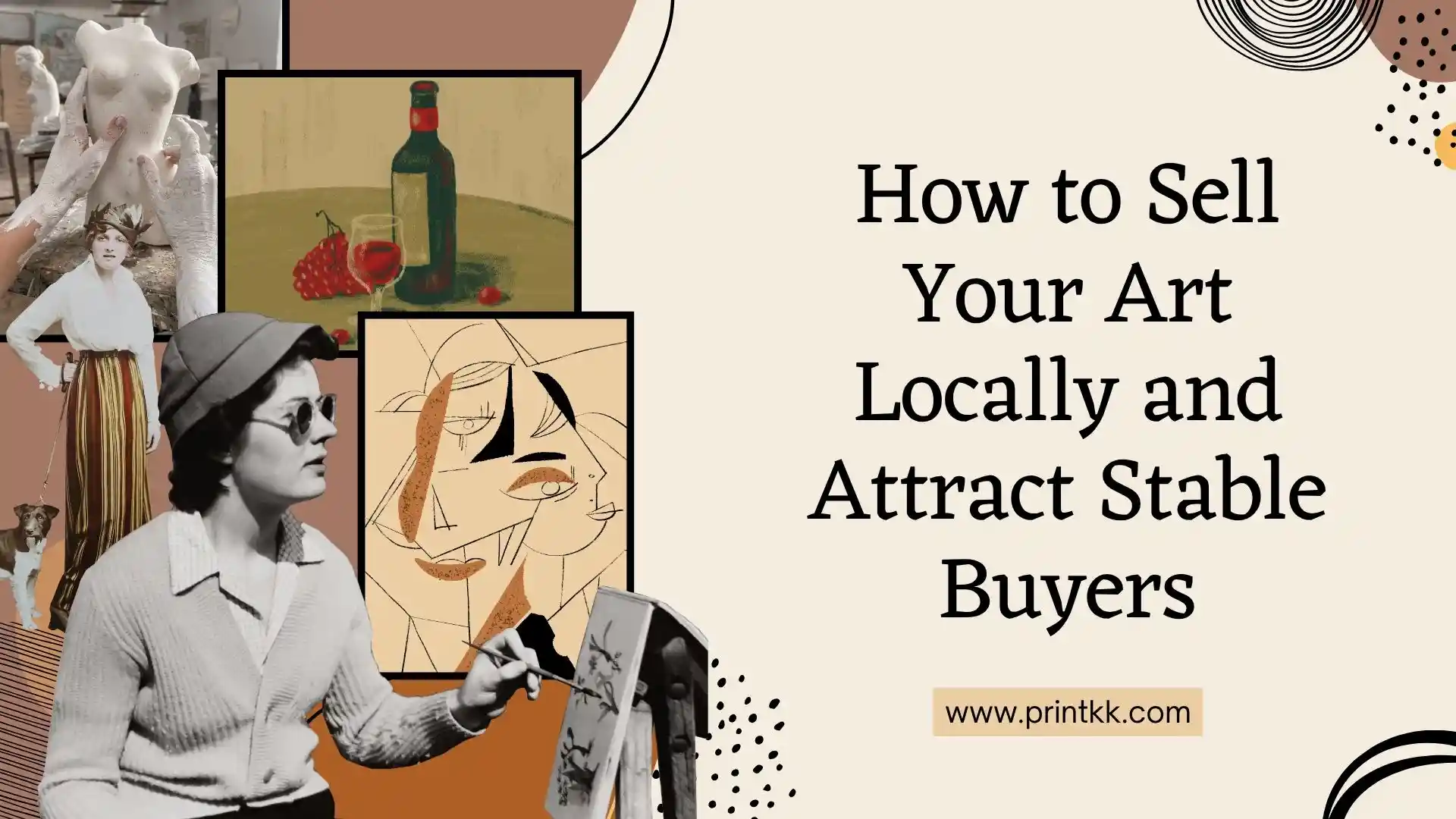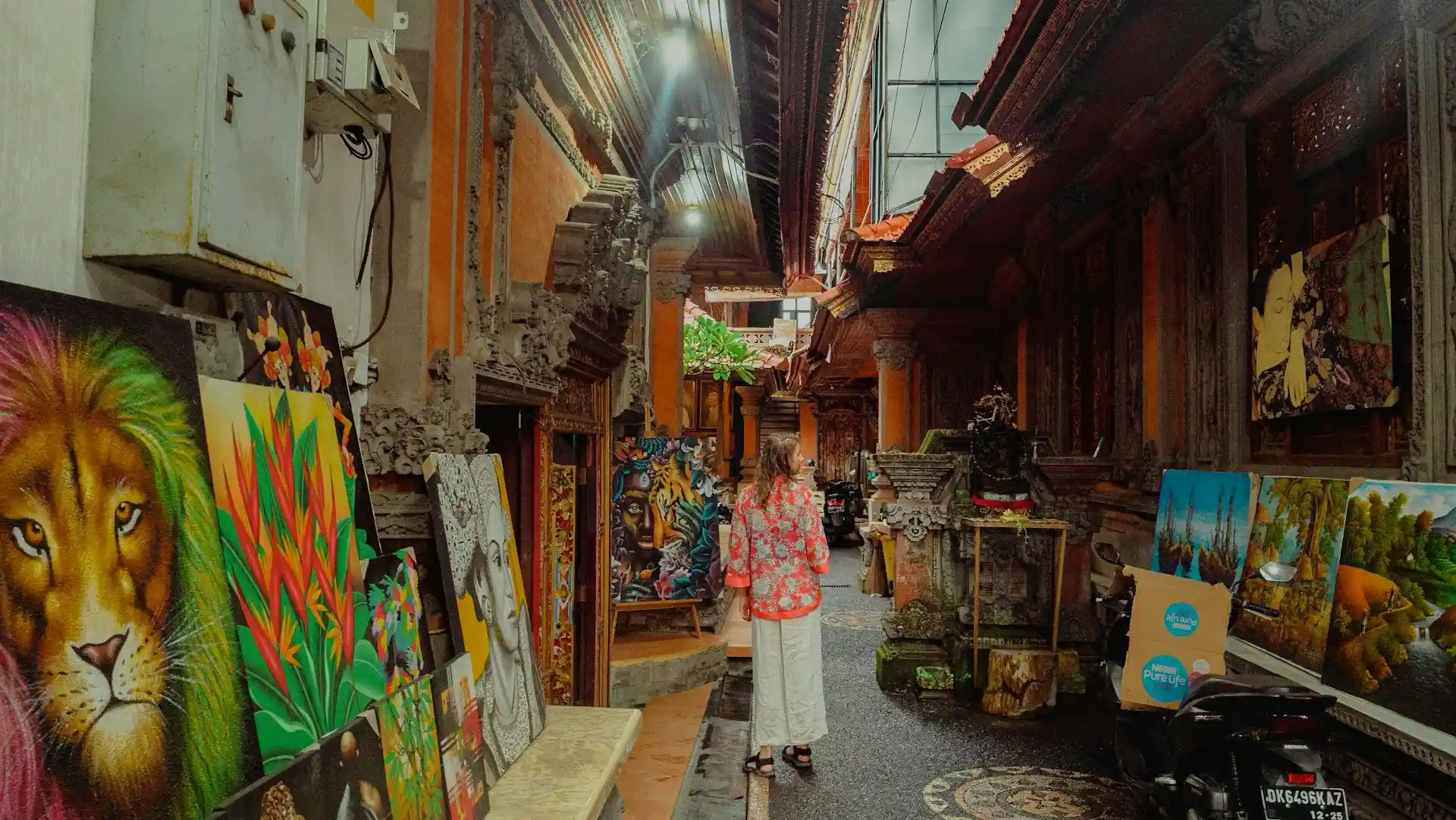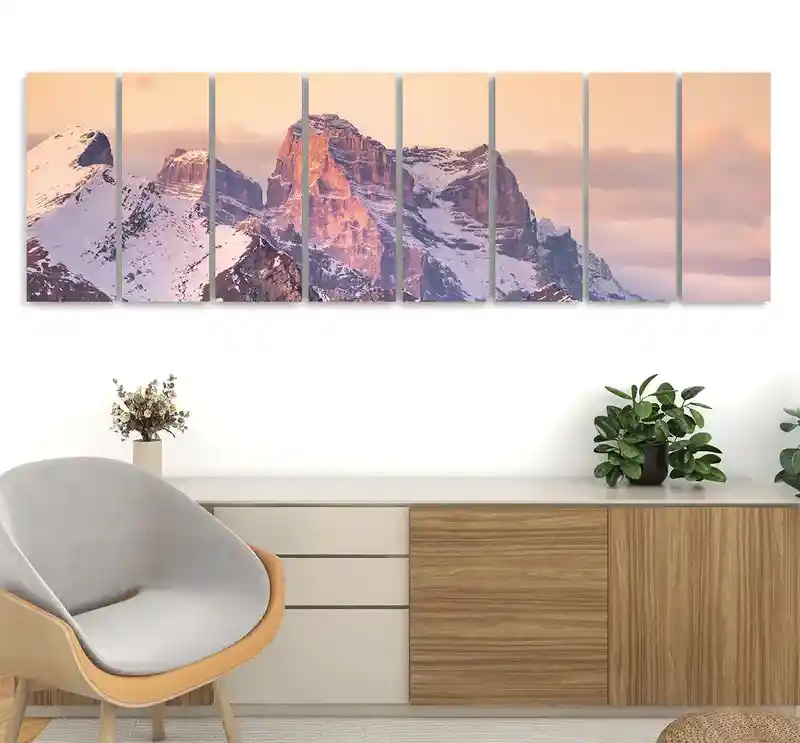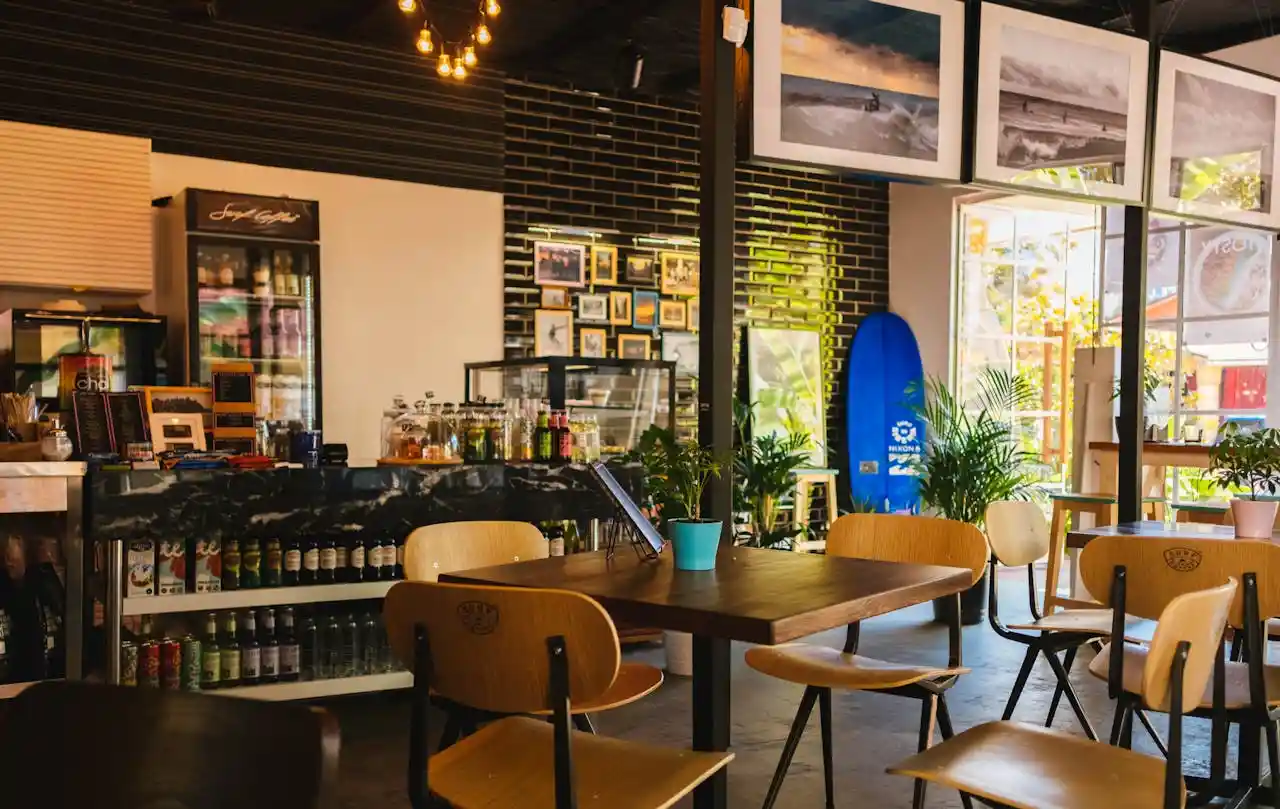
Selling your art locally gives you a chance to connect with people who truly appreciate your work and want to support you regularly. Many artists find it tricky to reach local buyers consistently, but with the right approach, you can build a steady base close to home.
So, how can you sell your art locally? Start by engaging with your local network and participating in community events where people gather.
Look for opportunities to show your work at local art fairs, markets, or galleries. Collaborating with nearby businesses—like cafes or boutiques—can also help your art find new fans.
The key is to be present, share your story, and build trust. Selling locally is as much about being part of your community as it is about selling pieces.
In this article, you'll discover practical steps and ideas to help you reach local buyers and develop a reliable audience for your art.
How to Sell Your Art Locally
1. Get Familiar with Your Local Art Scene
Before you try to sell anything, take time to explore what's already happening around you. Who's buying art? Where do people go to discover it?
Understanding your environment gives you an edge. You'll pick up a lot just by walking through markets, small galleries, or even local cafes that hang art.
Start by:
- Visiting neighborhood art shows
- Chatting with local artists or vendors
- Observing which styles or formats catch people's attention
2. Curate a Meaningful Selection
Instead of showing every piece you've ever made, select a small group that represents your style clearly. Think of it like telling a story with your art—what do you want people to remember?
Having a thoughtful collection shows confidence and helps buyers connect faster.
Choose:
- Pieces that look strong side-by-side
- A mix of sizes or prices (if it fits your style)
- Art that reflects what you care about
3. Choose Local Spaces That Match Your Vibe
You don't need a fancy gallery to start. Many local spots are happy to support artists. The key is finding spaces where your work feels like it belongs.
A colorful portrait might fit great in a cozy coffee shop. Abstract pieces might shine in a modern salon.
Look into:
- Bookstores with art walls
- Weekend art fairs or farmer's markets
- Restaurants or breweries with rotating art
4. Set Prices That Make Sense—for You and Your Buyers
It's okay if pricing feels awkward at first. Just be honest about what went into your art—your time, your effort, your materials. Then consider what people in your area are likely to spend.
Fair pricing isn't just about money—it shows you value your own work.
To keep it simple:
- Have a few affordable options for new buyers
- Be open to explaining what makes a piece special
- Avoid underselling just to make a quick sale
5. Be Open, Not Salesy
People don't just buy art—they buy the story, the vibe, the connection. So when someone stops to look at your work, start a real conversation. You don't have to "pitch" anything. Just be present.
Try this:
- Share a quick story behind the piece
- Ask them what kind of art they enjoy
- Offer a card or invite them to your next show
6. Keep Showing Up and Building Trust
Selling locally is more than a one-time event. It's about becoming a familiar face in your community. The more people see you, the more likely they are to stop, chat, and maybe even become long-term buyers.
Stay active by:
- Joining artist meetups or creative groups
- Sending updates or invites to those who've shown interest
- Showing up even when sales are slow
Where to Sell Your Art Locally
1. Local Art Fairs, Shows, and Exhibits
Art fairs and community shows are great places to meet people who want to buy art. These events often bring in large crowds, especially during warmer months or holiday seasons.
You'll get a booth or table where you can display your work and talk directly with buyers.
Why it works:
- People come ready to shop
- You can share your story in person
- Other artists around you help create a creative vibe
Tip: Bring a small table sign with your name and prices—it makes a big difference.
2. Local Galleries
Many cities have smaller, local galleries that support new and local artists. Some may take a commission, but they also help you reach buyers who already love art.
Don't be shy—visit a few galleries first to get a feel for their style, then ask how they select artists.
What to expect:
- A formal display space
- Possible openings or gallery nights
- Good exposure for higher-priced pieces
Being in a gallery can give your art more credibility.

3. Open Studio Days
If you work from home or a shared art space, consider hosting your own Open Studio. This means people can stop by, see where you work, and buy art directly from you.
Open Studios turn viewers into long-term supporters. It's a more personal experience, and it builds trust.
To prepare:
- Clean up your space (a little!)
- Hang your art clearly and neatly
- Offer snacks or drinks to make guests feel welcome
4. Pop-Up Locations
Pop-up shows are short-term events held in unexpected places—like an empty shop, a park, or even someone's backyard.
It's a creative way to get your art into the world without needing a big gallery. You can organize one yourself or team up with others. They feel fresh and fun, which draws attention.
Benefits:
- Low cost (sometimes free!)
- You control the setup
- Great for trying out new work or testing prices
5. Local Businesses (Cafes, Retailers, Boutiques)
Many small businesses love decorating with local art. Your work becomes part of someone's everyday space — that's powerful.
Cafes, bookstores, hair salons, and even yoga studios often feature art from local artists.
Some allow you to sell your pieces directly through them, while others may simply offer display space for exposure.
Here's what to do:
- Ask the manager if they feature local artists
- Offer to hang ready-to-hang pieces
- Leave a small card with your name and contact info

6. Local Markets (Farmers', Flea, Neighborhood Festivals)
Don't overlook farmers' markets or weekend street markets. They're full of friendly people and great energy. Even if most vendors sell food or crafts, there's often room for art—especially smaller pieces, prints, or postcards.
Why it works:
- Casual setting, easy to approach
- Great foot traffic
- Buyers can take home something right away
Bring a mix of price points to catch attention from all kinds of shoppers.
7. Community Events (Street Fairs, Town Festivals)
Your town probably holds fun events throughout the year—music festivals, holiday parades, cultural days, or outdoor movie nights.
These are perfect for selling your art while becoming part of the community vibe.
Be sure to:
- Sign up early (spaces go fast)
- Create weather-friendly displays
- Add color to your booth so people stop and look
These events help you meet people who live nearby—and might come back for more.
8. Art Co-ops and Art Classes/Workshops
Some cities have art co-ops—shared spaces where artists work together, show art, and even teach.
Being part of one can give you access to monthly exhibits, group shows, and new audiences. You can also teach a class to share your skills and get your name out there.
Look for:
- Community art centers
- Shared studio spaces
- Schools or clubs offering workshops
Being involved keeps your art in front of people all year long.

Custom 8 Panels Canvas Prints Wall Art - Print on Demand Fulfillment - PrintKK
How to Price Local Original Art and Prints
Understand Your Local Audience
Get to know the people around you. What kind of income do they have? How much do they usually spend on art or similar things?
Visit local galleries, markets, or art fairs and take note of prices. See what kinds of art sell best — are originals more popular, or prints?
Is your area a busy city, a place with lots of tourists, or a quiet town? This matters. It changes what people expect to pay and what kinds of art they buy.
Choose the Right Pricing Method for Local Sales
There are different ways to decide on a price. One popular method is cost-plus pricing. Here's how it works:
- Add up your material costs, like canvas, paint, paper, or ink.
- Calculate your time by multiplying how many hours you worked by an hourly rate you feel is fair.
- Include other costs like studio rent, packaging, or marketing.
- Add your profit margin, maybe 30% to 50%.
This method is clear and easy to explain if buyers ask how you set your price.
Another simple way is to use tiered pricing by size. For example:
- 8x10" = $80
- 11x14" = $120
- 16x20" = $180
This works well when you sell at fairs or booths because it keeps prices consistent and easy to understand.
Compare Your Prices Locally
Check out what other artists and galleries charge nearby. Look at websites, social media, or local shows. Stay competitive, but don't feel pressured to lower your price just to fit in.
Focus on the value of your art and what makes it special.
Pricing Different Formats for Local Buyers
Original artwork usually sells for more because it's one-of-a-kind and handmade. You can offer different sizes to fit different budgets.
Small originals can be a good entry point, while larger pieces might attract collectors willing to pay more.
Art prints are different. They're usually priced lower because you can sell many copies. For casual buyers or gifts, prints are popular. Prices might look like this:
- Small prints (5x7") = $15–$25
- Medium prints (8x10", 11x14") = $30–$50
- Large prints (16x20"+) = $60–$100
To learn more about Art print sizes, read this article: Guide to Popular Art Print Sizes That Boost Artwork Sales
If you create limited edition prints, these have more value because you limit how many are made, and you might sign and number them. These can be priced higher, maybe $75 to $150 depending on size and rarity.
For commissions or custom work, always set a clear base price. Explain what's included, like size, framing, or edits. It helps to have a pricing sheet or menu ready for in-person sales so buyers know what to expect.

Print On Demand Canvas Prints Wall Art (2:1) - PrintKK
Local Pricing Tips and Best Practices
Here are some quick tips to keep your pricing smart and consistent:
- Round your prices up. For example, charge $45 instead of $43.75. It looks cleaner.
- Offer framed and unframed options and clearly show the price difference.
- If you sell at markets, check local tax rules and include taxes in your price if needed.
- Be consistent across all places you sell. Don't undercut yourself by changing prices too much.
- Use price tags or signs that explain why your art is worth the price, not just numbers.
Example Local Art Pricing Worksheet
Use a simple table like this to help figure out your prices and keep them fair.
Cost Type | Amount | Notes |
Materials | $20 | Paint, canvas, paper |
Time Spent | 5 hours | -- |
Hourly Rate | $15/hour | -- |
Overhead | $10 | Studio rent, packaging |
Profit Margin | 40% | Common profit margins are 20%-50% |
Total Price | $121 | (Materials + Labor + Overhead) × 1.4 |
How to Build Relationships with Local Businesses
Building solid relationships with local businesses is key when you want to sell your art consistently in your community. Start by becoming a familiar face.
Visit the stores you're interested in working with—not just once, but over several weeks or months. Buy something, chat with the staff, and get to know the manager if possible.
This helps build trust and respect, which are crucial before you even show your art.
When you feel ready, reach out with a polite email.
Keep it short and clear: explain why you like their store, what kind of art you create, and share a link to your website.
Offer to send a small sample—like prints, cards, or stickers—to see if it fits their style. If your work is larger or more unique, ask for a meeting to show your pieces in person.
Don't worry if you don't get a reply immediately.
Follow up after two weeks with a gentle reminder. If you still hear nothing, it's okay to move on. This process is a numbers game.
Also, be prepared with how you want to present and price your art. Businesses usually want about half the sale price, so plan accordingly.
Discuss where and how your work will be displayed, and how often it will be changed. Some places might even want a small cut; others won't. It's smart to have a simple written agreement to keep things clear.
Building these connections takes time, but once established, they can bring stable buyers and open doors you didn't expect.

Tips for Managing Local Art Show Sales and Transport
1. Preparing for a Local Art Show
- Choose the right venue: Think about who visits the event and if they'd like your style of art.
- Pick your best pieces: Bring artworks that represent your style well and are easy to move. Label each piece clearly with size and price.
- Pack your essentials: Don't forget tools for setting up, signs, business cards, and packing supplies for sold art.
2. Effective Art Display Techniques
- Arrange your booth smartly: Keep it tidy and open so people can move around easily and see your work.
- Set up good lighting: Use portable lights if the natural light isn't enough, so colors look just right.
- Think about security: Use secure hanging methods and keep an eye on your art. Check if insurance is available or consider your own.
- Present professionally: Make sure your signage is clear and consistent. Display prices visibly and include a short artist bio.
3. Smooth and Secure Art Transportation
- Pack carefully: Wrap framed works and canvases in bubble wrap, and cushion sculptures well inside sturdy boxes.
- Choose transport wisely: You can drive your art yourself to save money or hire professionals for safer shipping.
- Consider insurance: Decide if you want insurance for transport and know who is responsible if damage happens.
4. Handling On-Site Sales
- Keep pricing clear: Make sure prices are easy to find and be ready to explain the value of your art.
- Use mobile payment systems: Devices like Square or PayPal Zettle help make quick, smooth sales.
- Prepare for smooth checkout: Charge your devices, ensure internet access, and have backup plans.
- Engage with buyers: Share stories about your work and listen carefully to build trust and close sales.
5. Managing Inventory and Fulfillment
- Track your stock: Keep display items separate from backup pieces and use apps or spreadsheets to stay organized.
- Pack sold art on the spot: Provide receipts and collect buyer contact info for delivery or follow-up.
- Offer flexible delivery options: Let buyers choose local pickup or delivery, and pick reliable couriers.
- Follow up: Send thank-you notes, confirm deliveries, and ask for feedback to build good relationships.
6. Bonus Tips and Common Pitfalls
- Don't forget small but important items: Payment devices, power strips, change, pens, and more.
- Prepare for weather: If your show is outside, bring covers or tents in case of sun or rain.
- Be ready to adapt: Sometimes booths move or close early—stay calm and flexible to handle changes smoothly.
Read More:
Expert Tips
To wrap up, learning how to sell your art locally is about more than just showing your work. It takes careful planning, smart presentation, and good communication with buyers.
By choosing the right venues, displaying your art clearly, and managing sales smoothly, you build trust and attract steady customers.
Staying organized and prepared helps you handle any challenges that come your way. With these steps, you can grow your local art sales steadily and enjoy connecting with your community through your creativity.
FAQs
How do I sell my art for the first time?
Start by showing your work to friends and local groups. Join small art fairs or markets to get experience. Be ready to talk about your art and accept feedback kindly.
What is the best way to sell art locally?
Find places where your target audience visits often, like galleries, cafes, or markets. Make sure your display looks neat and your prices are clear. Building relationships with buyers helps too.
How do I find out what my art is worth?
Look at prices of similar art in your area. Consider your materials, time spent, and uniqueness. You can also ask other artists or gallery owners for advice.
Can I sell my art without a license?
Rules differ by location, but many places allow selling small amounts without a license. Check your local regulations to be sure and avoid any legal trouble.










 Global Shipping
Global Shipping








 Made in USA
Made in USA





















